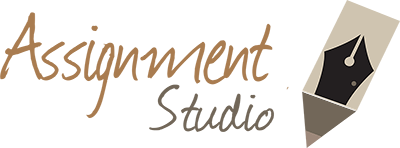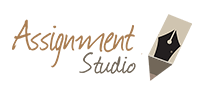Executive Summary
[Required for Assessment 3 only. This should Include a brief description of the purpose of the report, identify the key problem being addressed, and summarise the proposed design solution]
1 Product Description
[provide a description of your product here, 1-2 paragraphs.]
2 Requirements Analysis & Design Documents
2.1 PACT Analysis
2.1.1 People
[Things to consider in this section:
- Physical differences
- Psychological differences
- Language and cultural differences
- Individual differences in needs and abilities
- Different mental models
- Social differences]
2.1.2 Activities
[Things to consider in this section:
- Purpose of the activity
- Temporal aspects (items 1–4)
- Cooperation (5)
- Complexity (6)
- Safety-critical (7 and 8)
- The nature of the content (9 and 10).]
2.1.3 Context
[The physical or circumstances under which the activity takes place, including:
- the physical environment
- an organizational context
- a social context]
2.1.4 Technology
[Things to consider in this section:
- Input methods
- Outputs (displays, sound, printers, haptics)
- Communication/network access
- Content, data and media]
2.2 Identifying User Requirements
2.2.1 Personas
[You need to create at least three (3) personas that represent your typical app/site users. You can use the layout/format of your choice, or similar to those provided in this unit content]
2.2.2 User Stories
[You need to create user stories for each of the 3 personas that]
2.2.3 Use Cases
[You need to create a use case diagram to reflect the use cases required for your selected task/area of the app/site you are working on]
2.2.4 User Journeys, Maps and other design documents
[You need to create at least one User Journey Model, or other type of map to demonstrate one of your persona’s uses of the app/site task]
3 Evaluation Methods
[Insert a short overview of the evaluation methods chosen, with reasoning for your choices.]
3.1 Sample Users/Testers
[Here you should identify the key characteristics including demographics of your sample users]
3.2 Formal/traditional Evaluation Methods of data collection
(Delete any sub-headings if not used)
[User evaluation forms with appropriate questions. Your questions should measure usability, user experience, and acceptance for your chosen app/site task.]
3.2.1 Usability
[perform a usability evaluation for the existing app/site using appropriate criteria.]
3.2.2 Accessibility
[perform a usability evaluation for the existing app/site using appropriate criteria.]
3.2.3 User Experience
[user experience evaluation for the existing app/site using appropriate criteria.]
3.2.4 Acceptance
[acceptance test for the existing app/site using appropriate criteria.]
3.3 Other methods of evaluation
[delete any sub-headings if they are not used]
3.3.1 Semi-structured interviews
[in addition to using evaluation forms, you can prepare some questions to ask your sample users – this method can be used to gain other insights into the use of the app/site.]
3.3.2 Community feedback
[you may have received feedback from your development or prototype community, e.g. InVision Studio community, or itch.io]
3.3.3 Social Media feedback
[you may have received feedback from social media sites such as Linked in.]
4 Evaluation of Results and Analysis
4.1 Evaluation Results
[Place the results of user evaluations here. Use the headings from the previous section and insert your completed forms and other feedback here.]
4.2 Analysis of Results
[Summarise your results here.]
4.3 Key Problems found
[Identify at least three (3) problems you have found in your analysis of results.]
4.3.1 Problem #1
4.3.2 Problem #2
4.3.3 Problem #3
5 Design Alternatives (required for Assessment 3 only)
[Consider and discuss specialised factors of user interface designs, including emerging technologies to reflect users' characteristics (i.e. age, education, cultural differences, etc) to increase effectiveness and the user experience.]
5.1 Sketching and Brainstorming
[Use this section to include any other sketches or models created during the design processes.]
5.2 Design Language
[Aesthetic Requirements - Discuss general principles of evaluation of a user interface design in terms of aesthetics. Any discussions or information about the existing design choices of your chosen application, and any proposed suggestions/alternatives.
- Could include a storyboard or two
- Could discuss colours, fonts, etc
- Could include descriptions or any diagrams
The purpose of this section is for you to consider the visual and interactive aspects of the design. ]
5.3 Links to Prototypes
[provide links to your original, and your proposed prototypes, displaying alternative solution.
Please ensure that the link you provide is accessible by others, including your tutor. ]
6 Discussions, Recommendations, Next Steps
[You should discuss your current recommended adaptions to user interface designs based upon the results of a usability test, including adaptions based on improved and/or emerging technologies.
This section should be 1-2 paragraphs long and provide a summary of your recommendations and next steps.]
Breathe a Sign of Relief with our Academic Assistance: Get instant help, 100% personalized and accurate solutions that make your study life better.
Expert's Answer
Chat with our Experts
Want to contact us directly? No Problem. We are always here for you

Your future, our responsibilty submit your task on time.
Order NowGet Online
Assignment Help Services






